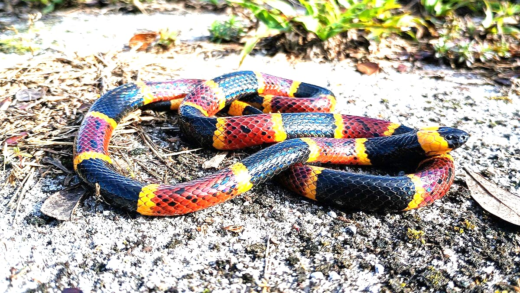This article discusses the best cat breeds for families, focusing on their behavior, temperament, health concerns, safe interactions with children, and the costs associated with ownership. It highlights essential care needs and the appropriate age for children to have a cat, ensuring a smooth transition into pet ownership for families.
Top Cat Breeds for Kids
The best cat breeds for families are those that thrive in a lively environment with children. When choosing a cat for your family, it’s crucial to consider breeds known for their friendly demeanor and adaptability. Some top contenders include:
- Ragdoll: Known for their gentle nature, Ragdolls are affectionate and enjoy being held. They tend to be very tolerant with children.
- British Shorthair: This breed is calm and easygoing, making them great companions for kids. They are less likely to be startled by noise and activity.
- Birman: Birmans are sociable and playful, often seeking interaction with children. Their friendly temperament makes them ideal family pets.
- American Shorthair: These cats are adaptable and have a balanced temperament. They are good with kids and can handle the excitement of a bustling household.
- Scottish Fold: With their unique folded ears, Scottish Folds are known for their playful and affectionate nature, which suits family life perfectly.
When selecting a cat breed, consider how they interact with children, their activity levels, and their overall temperament. This ensures a harmonious household where both kids and cats can thrive.
Kid-Friendly Cat Behavior
Understanding cat behavior around children is essential for a safe and happy home. Cats, unlike dogs, may not always seek out the company of children, but many breeds adapt well. Key behaviors to observe include:
- Playfulness: Breeds like the Ragdoll and Birman enjoy interactive play, which can be a great bonding experience for kids.
- Socialization: Cats that are well-socialized from a young age are more likely to be comfortable around children. Early exposure to kids can help.
- Body Language: Pay attention to a cat’s body language. Signs of discomfort, such as tail twitching or ears back, indicate they need space.
Encouraging gentle interactions, such as petting and playing with toys, helps ensure that kids and cats can coexist peacefully. Teaching children to respect the cat’s space is vital for fostering a positive relationship.
Temperament Breakdown
Analyzing the temperament of each recommended breed is crucial for making the right choice. Here’s a quick overview of the personalities of some family-friendly cat breeds:
- Ragdoll: Extremely affectionate, they often go limp when picked up, hence the name. Great for cuddles!
- British Shorthair: Known for their easygoing and independent nature, they can be playful yet prefer a calm environment.
- Birman: Gentle and sociable, Birmans enjoy being around people and are often described as “dog-like” in their loyalty.
- American Shorthair: They are adaptable and friendly, making them easy to integrate into a family setting.
- Scottish Fold: Their quirky personality and playful nature make them a favorite among families.
Understanding these temperaments helps families select a cat that fits their lifestyle and expectations, ensuring a loving and harmonious environment for all.
Special Care Requirements for Family Cats
When considering the best cat breeds for families, it’s important to understand the special care requirements of each breed. Family-friendly cats like Ragdolls and Birmans require regular grooming due to their long fur, which can mat easily if neglected. Here are some specific care needs to keep in mind:
- Grooming: Long-haired breeds need brushing at least two to three times a week. Short-haired cats might only require occasional brushing.
- Diet: A balanced diet is crucial. Consult your vet for recommendations based on age, size, and activity level.
- Health Check-ups: Regular vet visits are essential. Vaccinations, dental care, and parasite control should be on your radar.
- Playtime: Active breeds need daily playtime to keep them mentally and physically stimulated. Interactive toys can help engage your cat.
Understanding these care aspects ensures that you provide the best environment for your new feline friend.
Space Requirements for Cats
Assessing the space requirements for cats is vital when choosing the right breed for your family. Most cats adapt well to various living situations, but some breeds have specific needs. Here’s what to consider:
- Indoor vs. Outdoor: Indoor cats like the British Shorthair are content in smaller spaces, while outdoor breeds may require more room to roam.
- Vertical Space: Cats love to climb! Providing cat trees or shelves can help them feel secure and entertained.
- Safe Areas: Ensure there are quiet spots for your cat to retreat to when they need alone time, away from the hustle and bustle of kids.
Evaluating your living space ensures your chosen breed will thrive in your home environment.
Activity Levels of Different Cat Breeds
Understanding the activity levels of cat breeds helps match the right feline to your family’s lifestyle. Cats vary greatly in energy levels, and knowing this can aid in making the best choice. Here’s a breakdown:
- High Energy: Breeds like the Bengal and Abyssinian are active and require more playtime and engagement.
- Moderate Energy: Ragdolls and American Shorthairs are playful but can also enjoy lounging around. They are often content with a mix of play and relaxation.
- Low Energy: Breeds like the British Shorthair are generally more laid-back and may prefer shorter play sessions interspersed with napping.
Identifying the activity level of your chosen breed ensures they fit seamlessly into your family’s daily routine, providing joy without overwhelming everyone.
Health Considerations for Family Cats
The best cat breeds for families may come with some health concerns that potential owners should be aware of. Some breeds, such as the Ragdoll and Birman, are prone to specific genetic conditions. Here are some common health issues to consider:
- Hypertrophic Cardiomyopathy (HCM): This is a common heart condition in breeds like the Ragdoll and Maine Coon. Regular vet check-ups can help detect this early.
- Respiratory Issues: Breeds with flat faces, like the British Shorthair, may have breathing difficulties, especially in hot weather.
- Allergies: Some cats can be sensitive to certain foods or environmental factors. It’s essential to monitor your cat for signs of allergies, such as itching or digestive issues.
Staying informed about these potential health concerns can help you provide better care for your family-friendly cat, ensuring a long and healthy life.
Safe Interactions Between Kids and Cats
Encouraging safe interactions between children and cats is crucial for fostering a positive relationship. Here are some practical tips:
- Teach Gentle Handling: Kids should be taught to pet cats gently, avoiding rough play that could scare or hurt the animal.
- Supervise Playtime: Always supervise interactions between young children and cats. This ensures that both parties feel comfortable and safe.
- Respect Boundaries: Teach children to recognize signs of discomfort in cats, such as hissing or swatting, and to give the cat space when needed.
By instilling these habits, families can create a harmonious environment where both kids and cats can thrive together.
Appropriate Age for Kids to Own a Cat
Determining the best age for kids to have a cat is essential for a successful pet experience. Generally, children aged six and older are suitable candidates for pet ownership. Here’s why:
- Understanding Responsibility: Kids around this age can grasp the basic responsibilities of pet care, such as feeding and grooming.
- Ability to Follow Instructions: Older children can follow instructions for safe interactions and understand the needs of a cat.
- Emotional Maturity: Kids over six are usually better equipped to handle the emotional aspects of pet ownership, including the joys and challenges.
Ultimately, parental guidance is crucial in teaching kids how to care for their feline companions, ensuring a rewarding experience for everyone.
Understanding the Costs of Cat Ownership
Before adopting one of the best cat breeds for families, it’s vital to understand the costs associated with ownership. Here are key expenses to consider:
- Initial Adoption Fees: Depending on the breed and location, adoption fees can range from $50 to $150 or more.
- Routine Veterinary Care: Regular check-ups, vaccinations, and spaying/neutering can cost between $200 and $400 annually.
- Food and Supplies: Budget for high-quality cat food, litter, toys, and grooming supplies, which can add up to $500 per year.
- Emergency Expenses: Always set aside some funds for unexpected veterinary emergencies, which can be quite costly.
Being aware of these financial commitments ensures that families are prepared for the long-term responsibility of cat ownership.





Comments are closed.